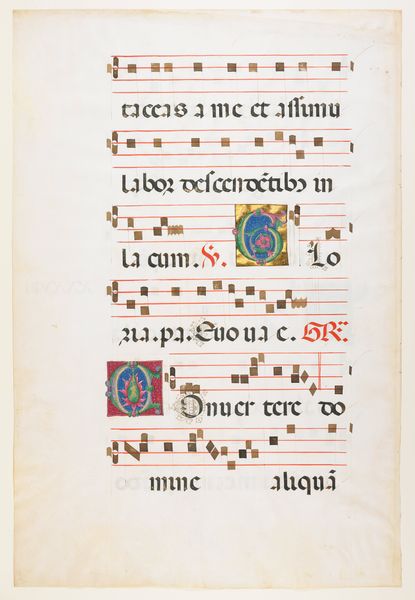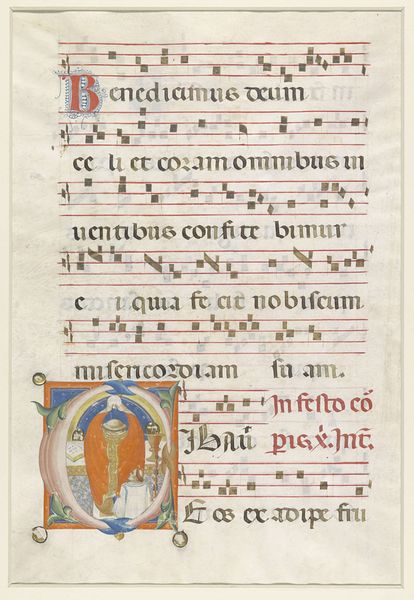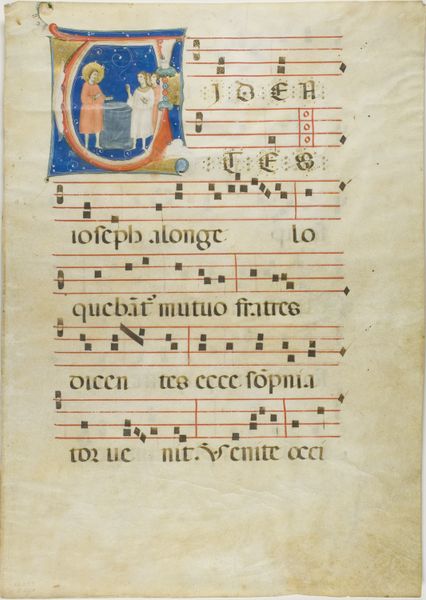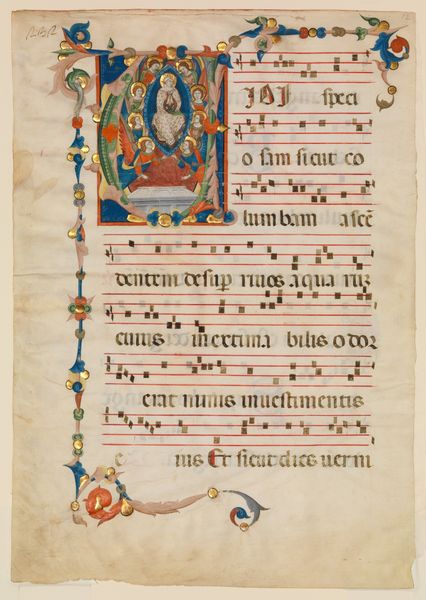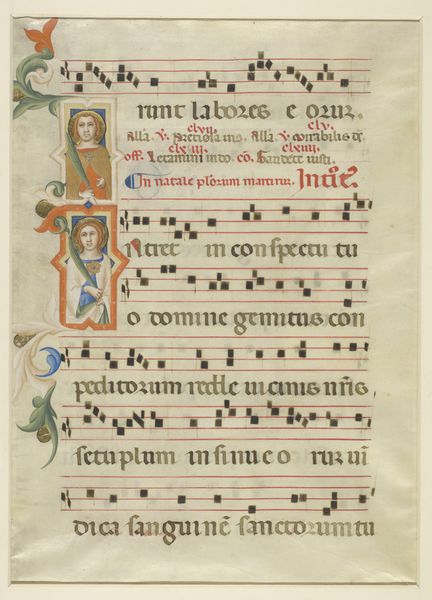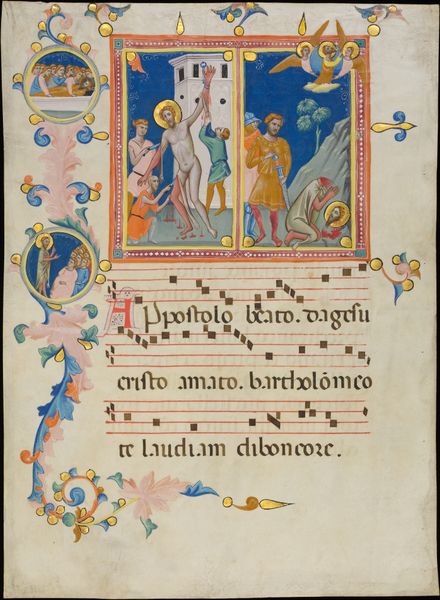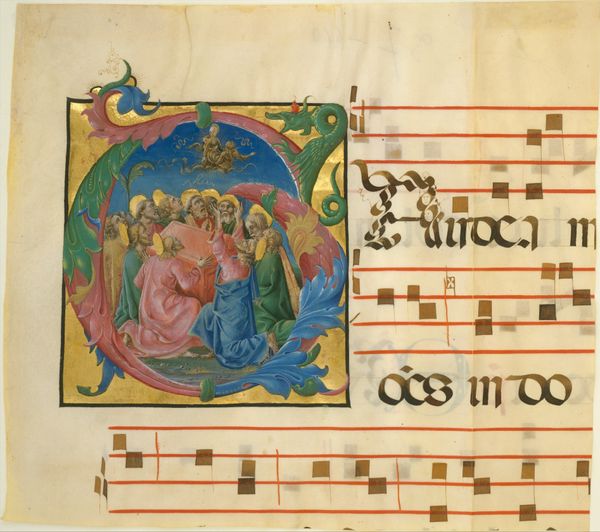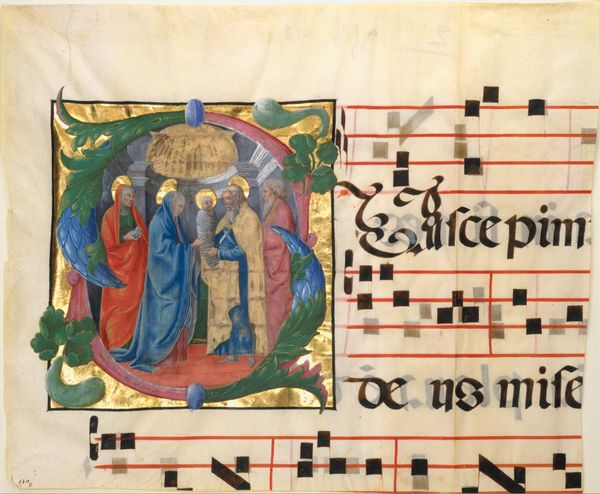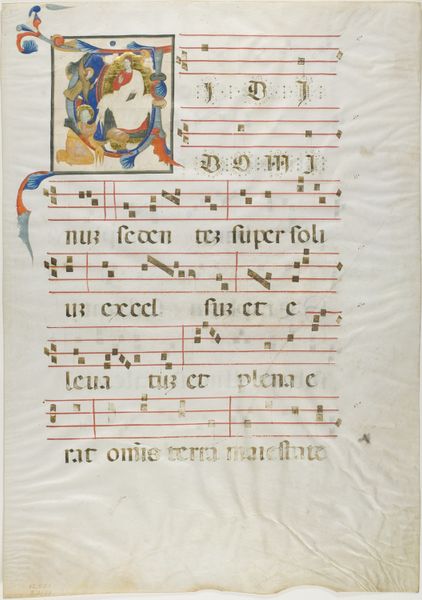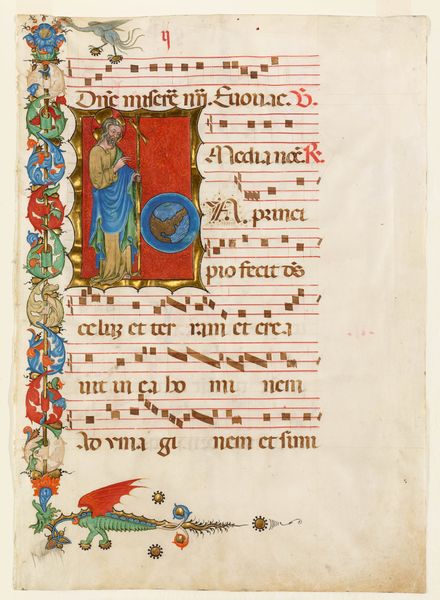
Crucifixion with a Crowd of Supplicants c. 1425 - 1464
0:00
0:00
tempera, painting
#
medieval
#
narrative-art
#
tempera
#
painting
#
figuration
#
history-painting
#
international-gothic
#
italian-renaissance
#
italy
#
miniature
Dimensions: 13 1/16 x 9 3/8 in. (33.18 x 23.81 cm) (sheet)
Copyright: Public Domain
This "Crucifixion with a Crowd of Supplicants" was made in the medieval period, likely in Italy, and is attributed to Bertolino de' Grossi. It is made of ink and paint on vellum. Vellum is a writing surface made from specially prepared animal skin, usually calfskin. The creation of vellum was labor-intensive, requiring careful cleaning, stretching, and scraping. The ink would have been prepared from natural materials, like soot, minerals, and plant extracts, which would have been painstakingly ground and mixed with a binder. The vivid colors came from similarly processed pigments. The detailed miniature painting shows the crucifixion scene surrounded by a crowd of people, along with musical notation. The musical notation would require knowledge of music theory and calligraphy. The value of the materials and the time required for production meant that it was a luxury item commissioned for wealthy patrons or religious institutions. The book itself represents a significant investment of resources and labor, reflecting the social and economic structures of its time. The skill and artistry involved challenge our modern separation of art and craft, inviting us to consider the social context of production.
Comments
minneapolisinstituteofart about 2 years ago
⋮
As stated in the heading, this hymn was sung during the service of vespers (about 4:30 p.m.) held on Sundays in Advent, the period of spiritual preparation observed during the four weeks preceding Christmas. The music accompanying the text is written in the Gregorian system then in general use for liturgical choral music, using box-like notations on a four-line staff. The first word of the hymn, "conditor," (maker or creator) begins with an historiated initial: an enlarged letter containing a narrative scene. This letter C shows the Crucifixion of Christ, flanked by angels, on the hill of Golgotha (or Calvary), symbolically identified by the skull. The border of acanthus scrolls and gold balls, with cusped quadrefoils at the corners, is a characteristic type of border decoration found in manuscripts produced in northern Italy in the late 14th century. At this time Padua and Milan were thriving centers for the production of illuminated manuscripts under the patronage of Giangaleazzo Visconti, who reigned as Duke of Milan from 1385 to 1402.
Join the conversation
Join millions of artists and users on Artera today and experience the ultimate creative platform.
